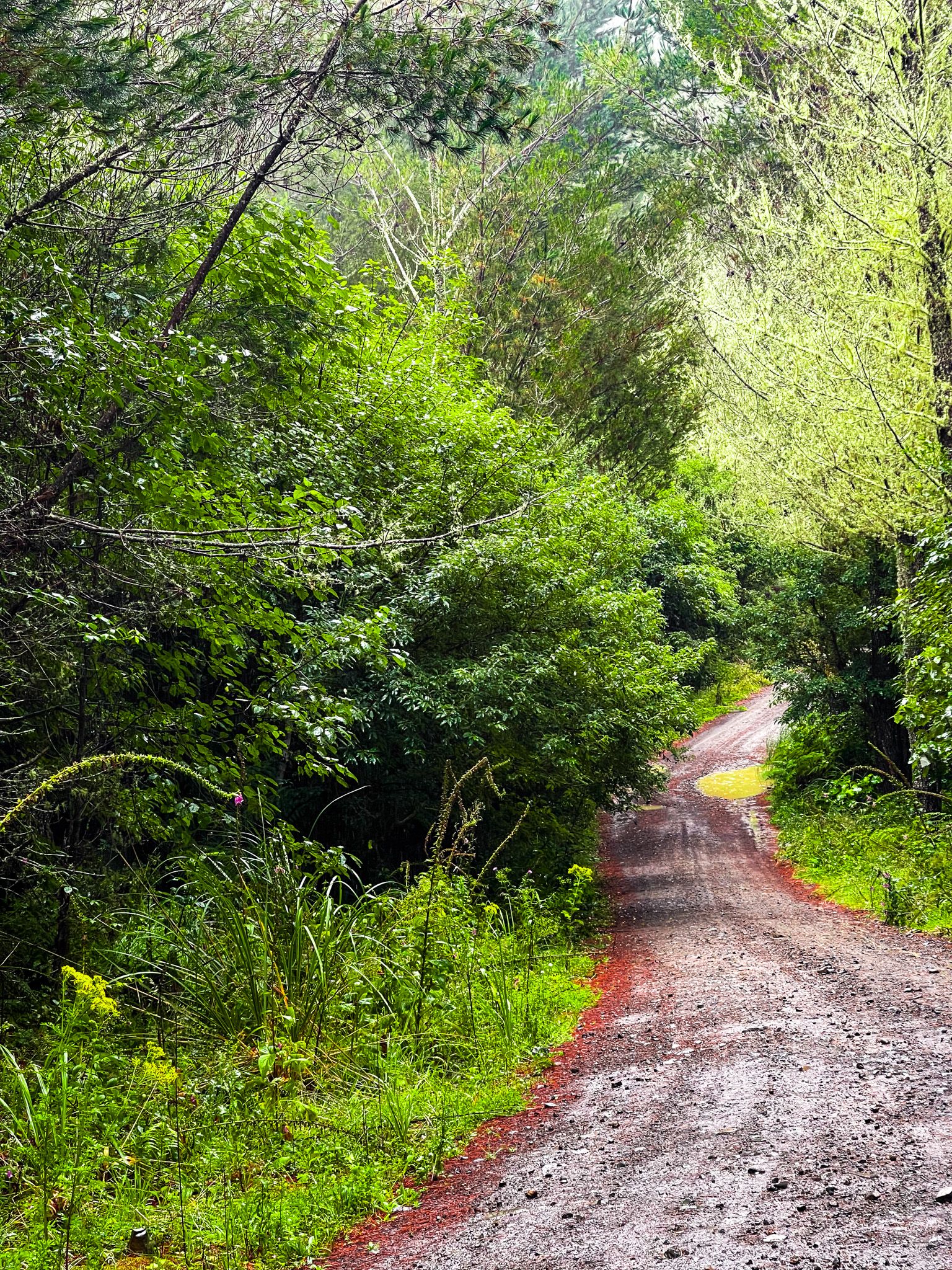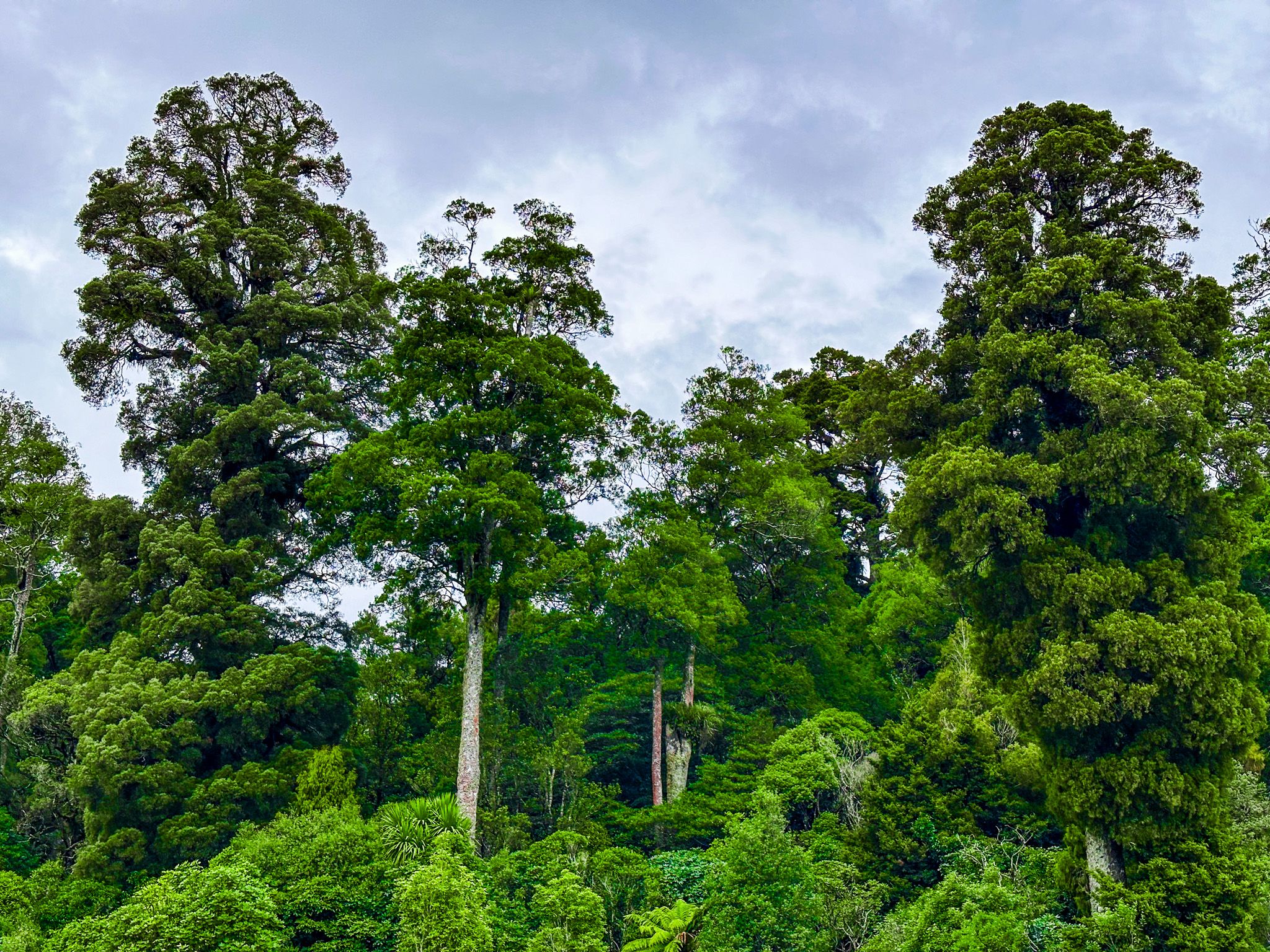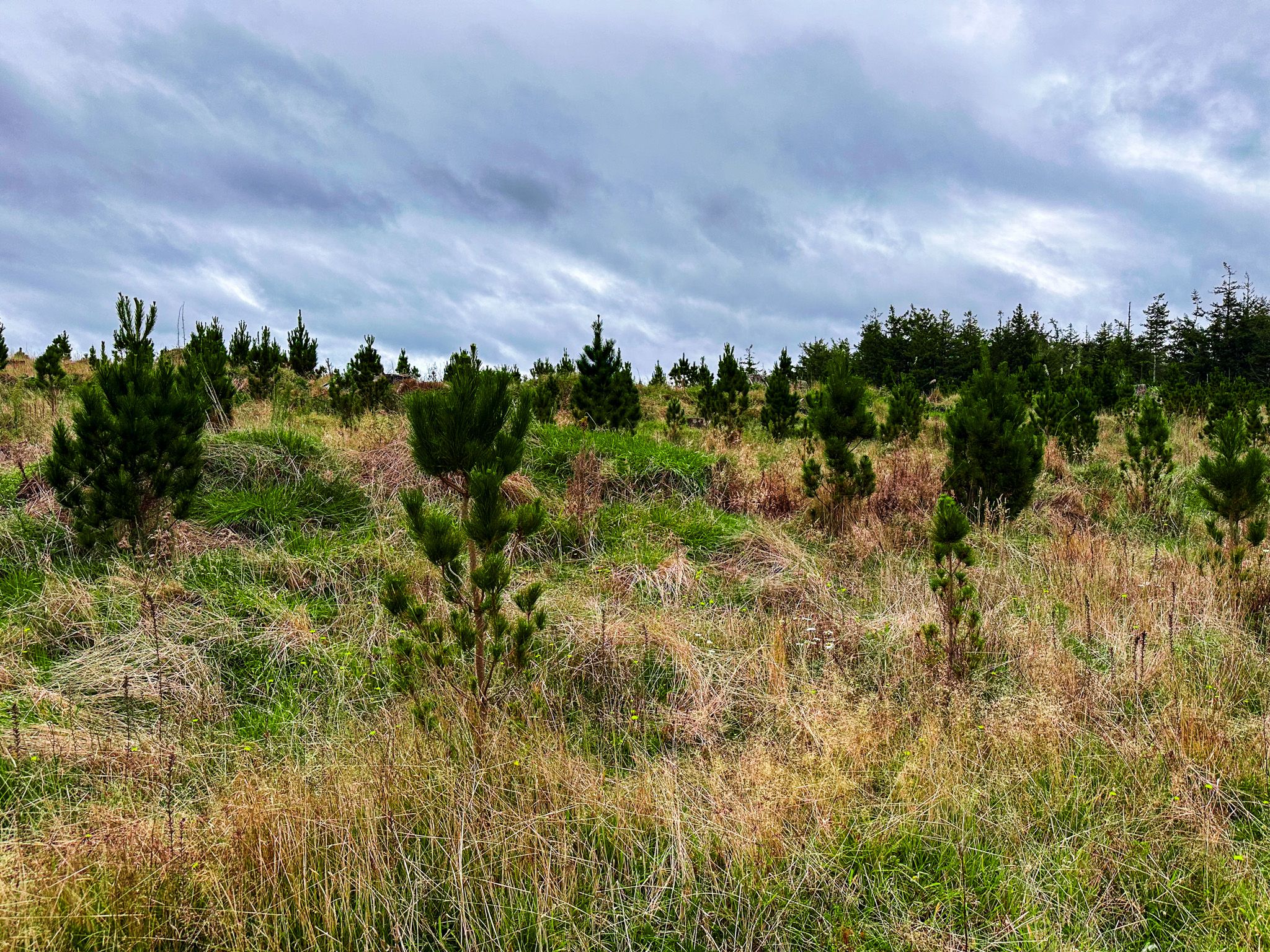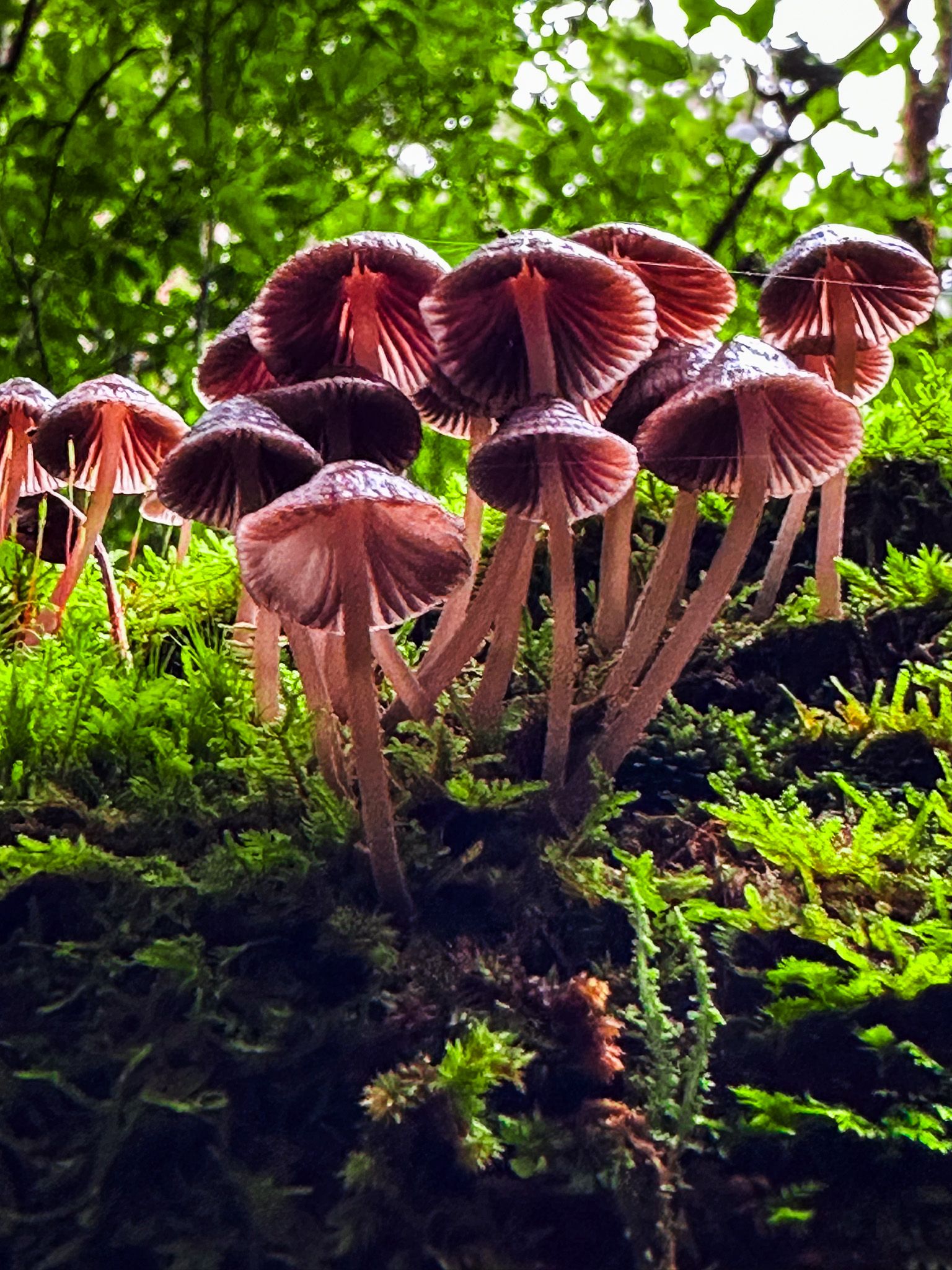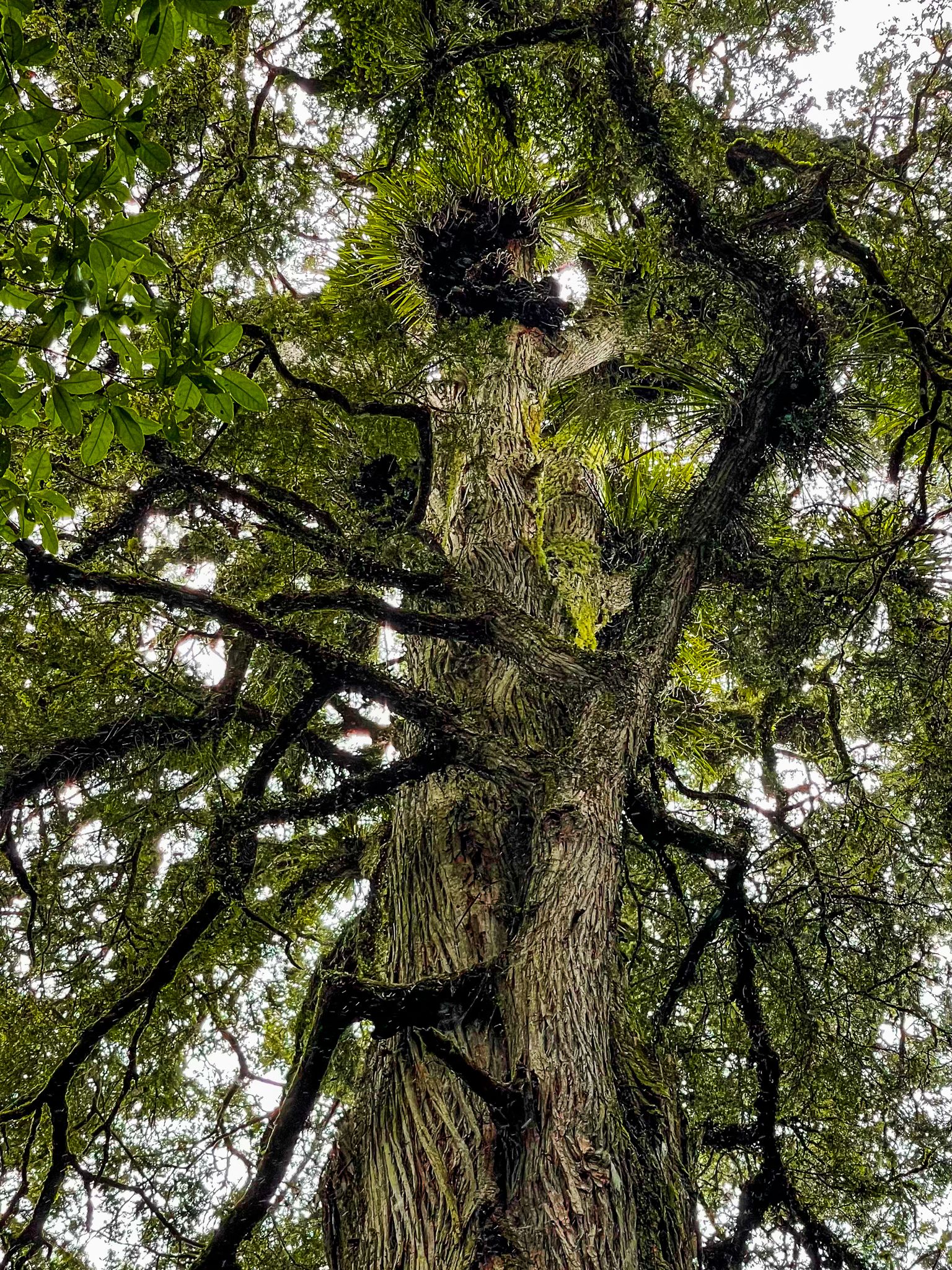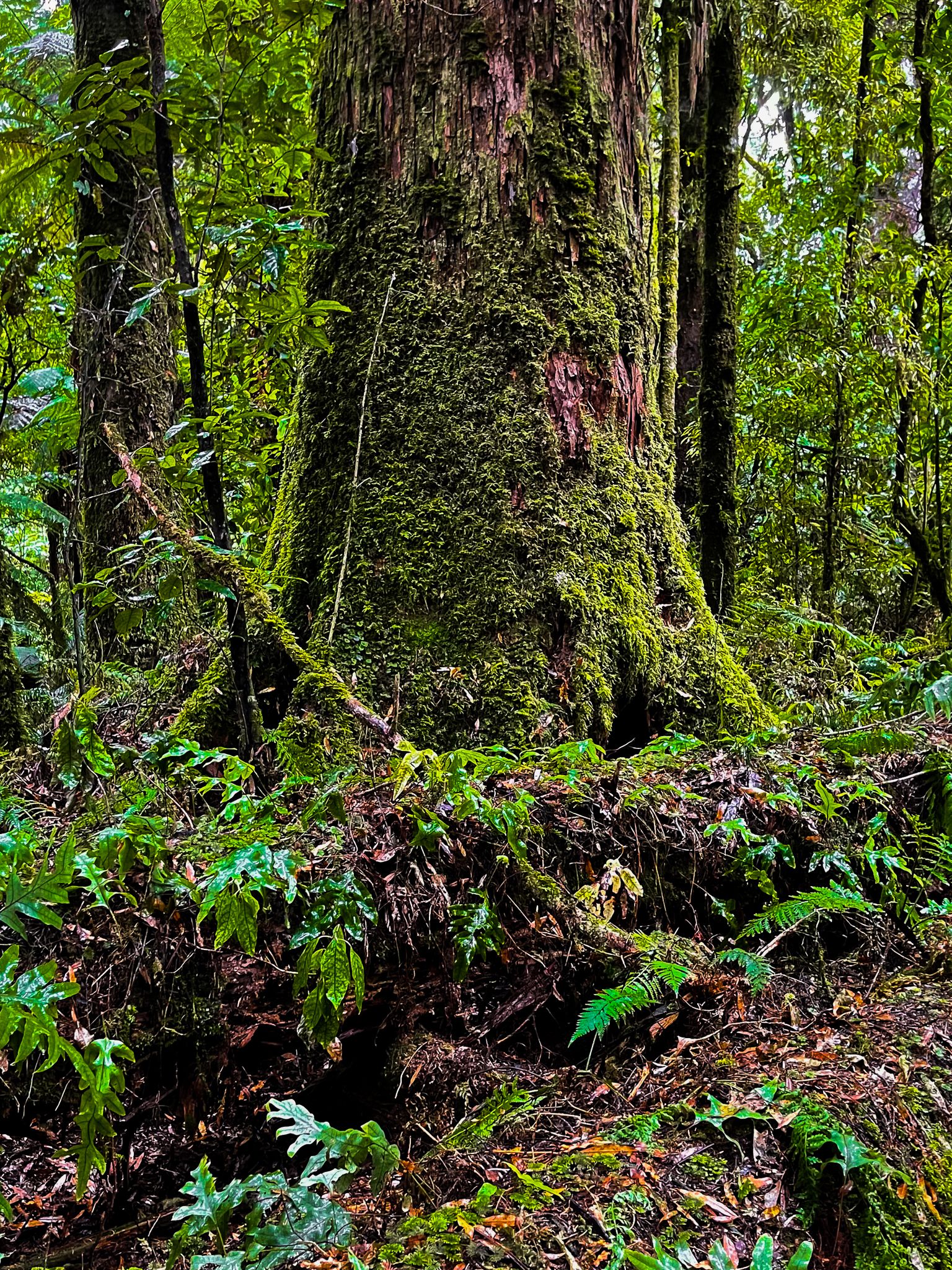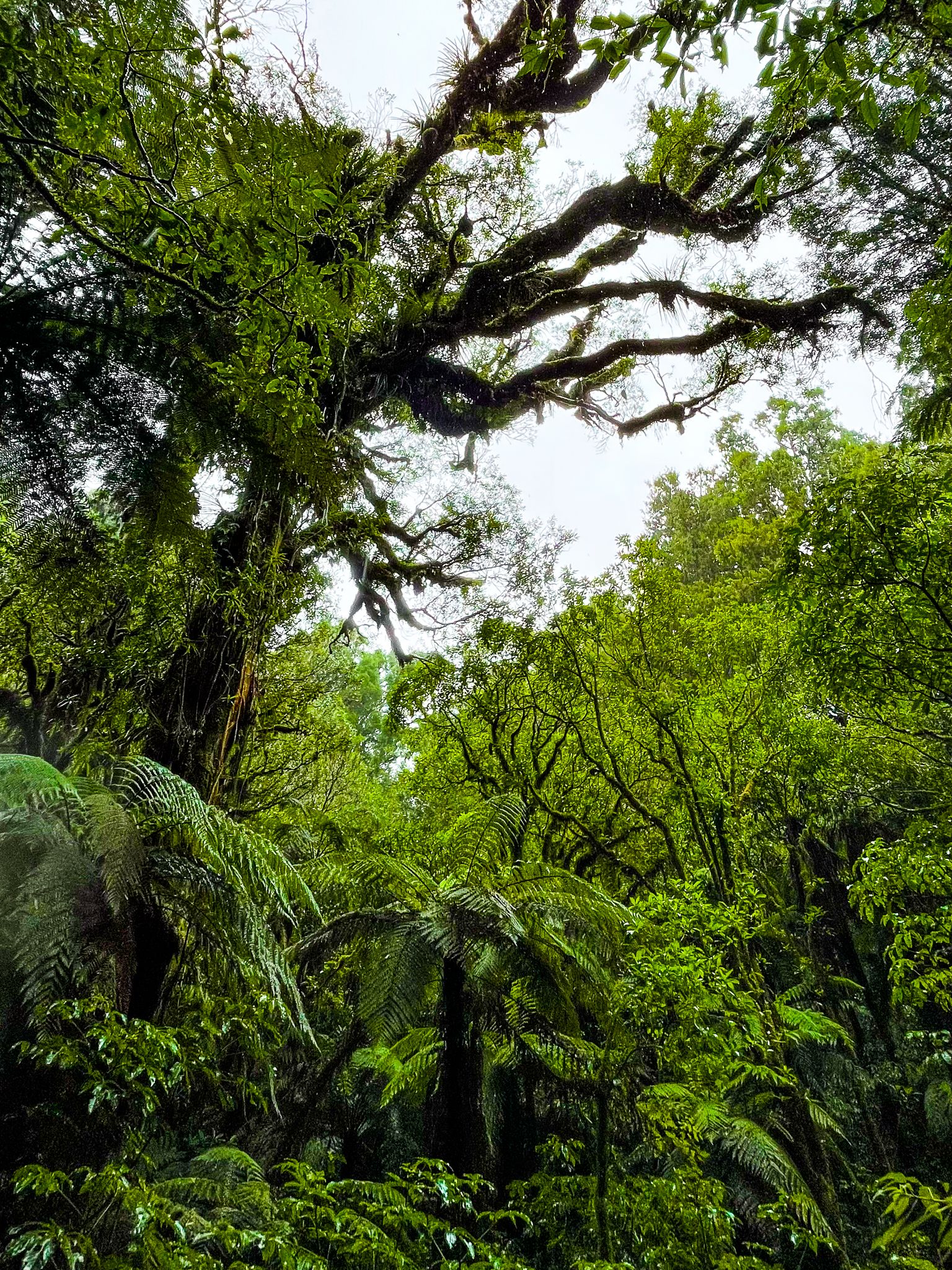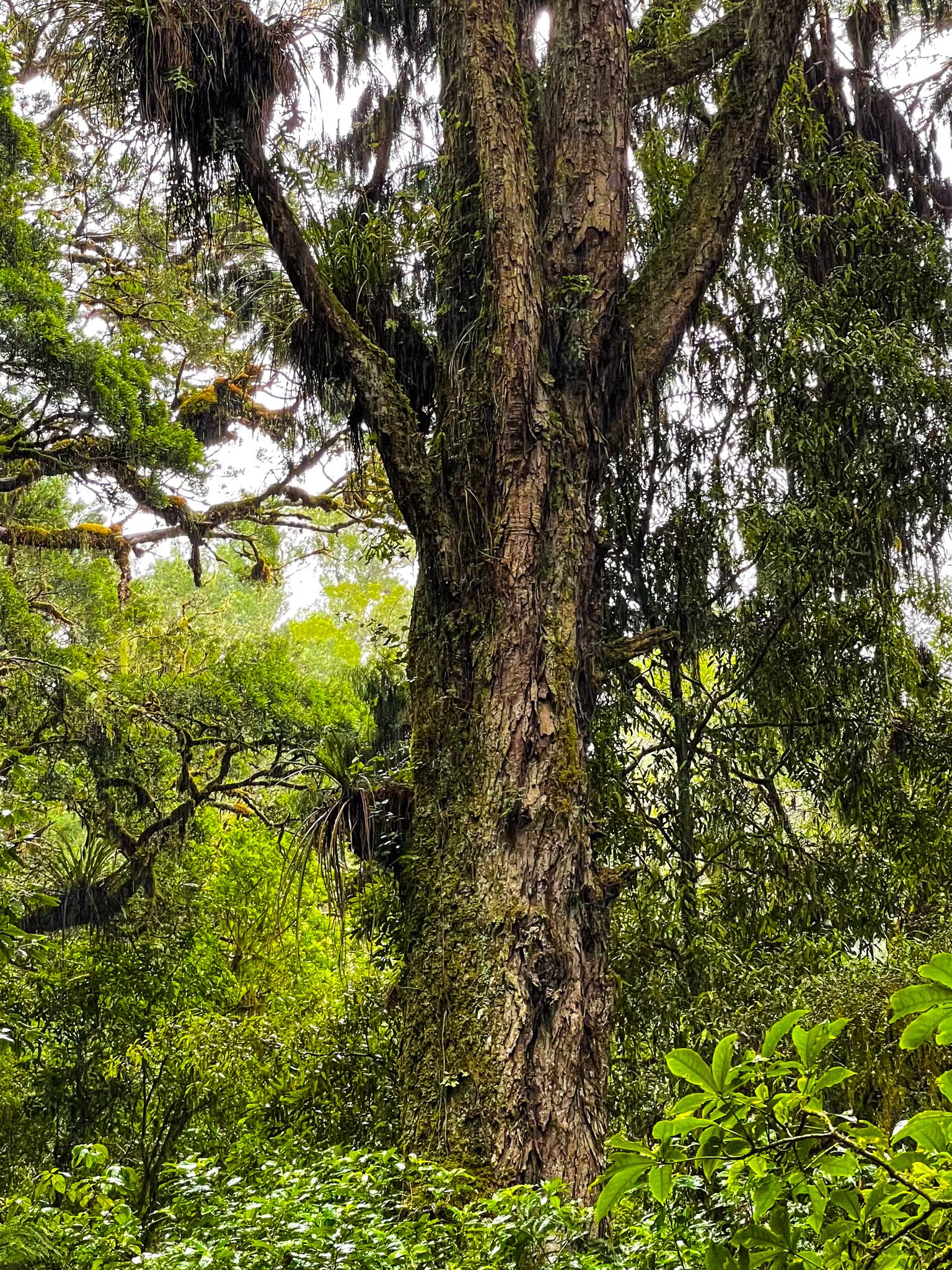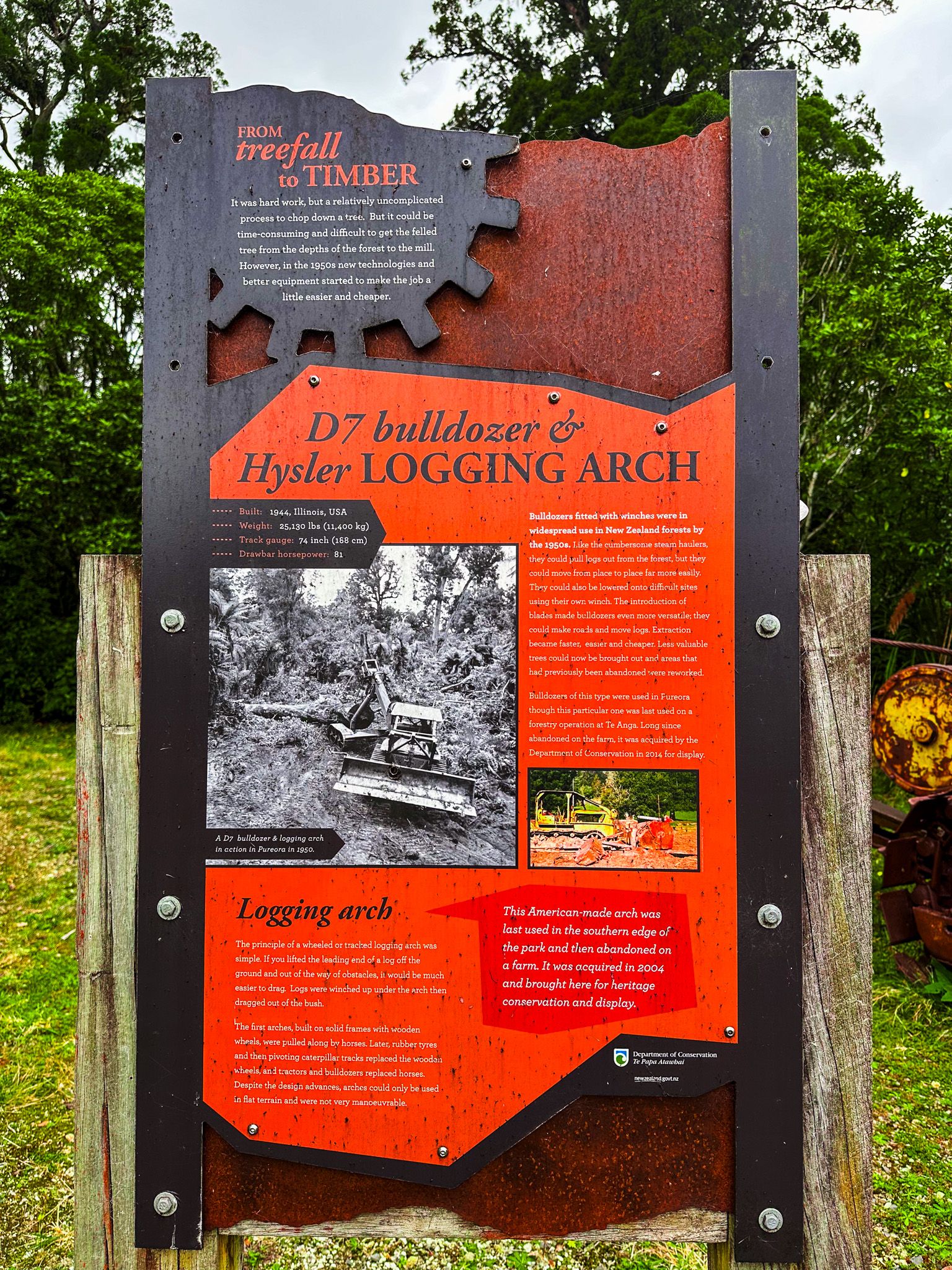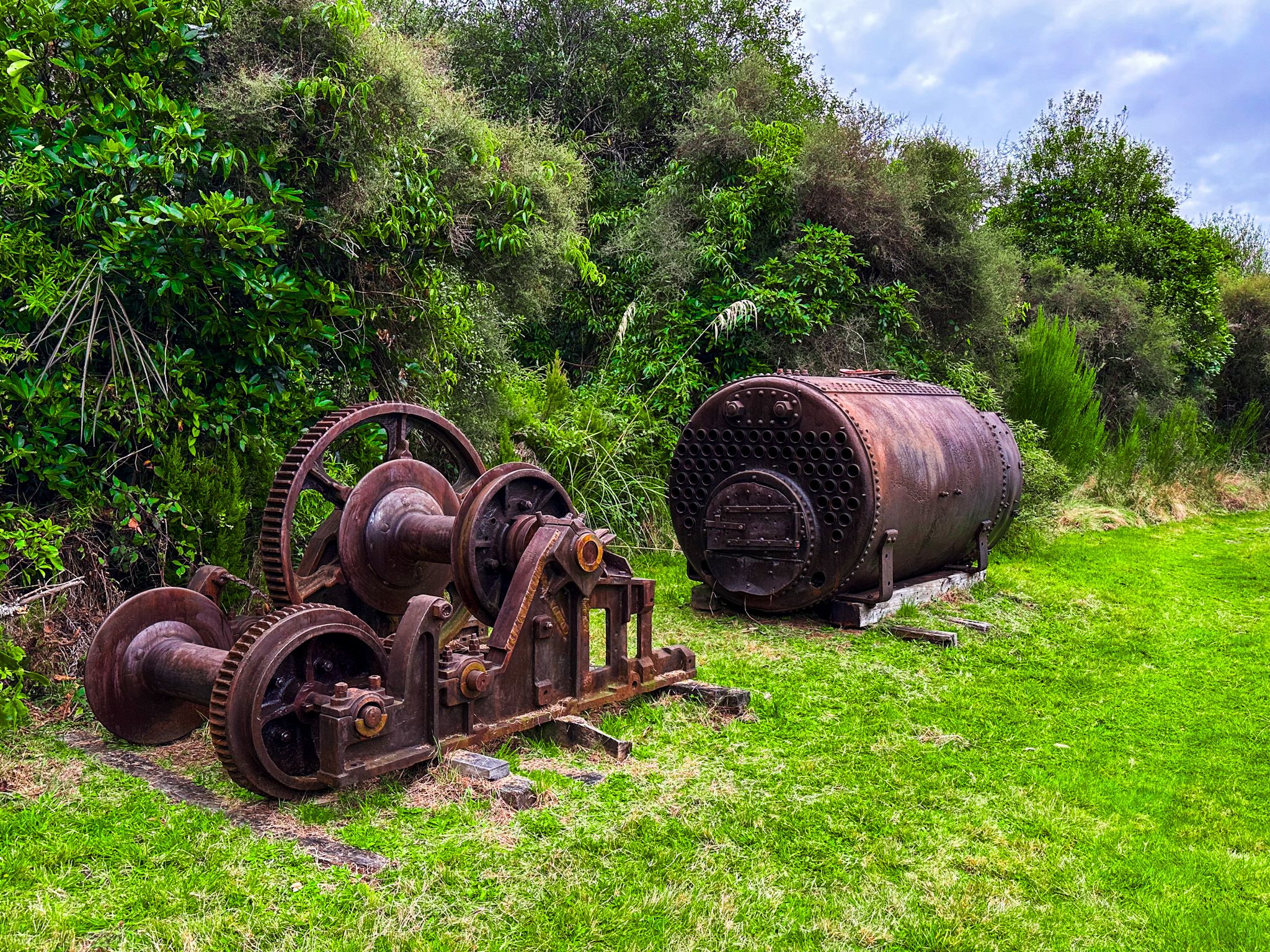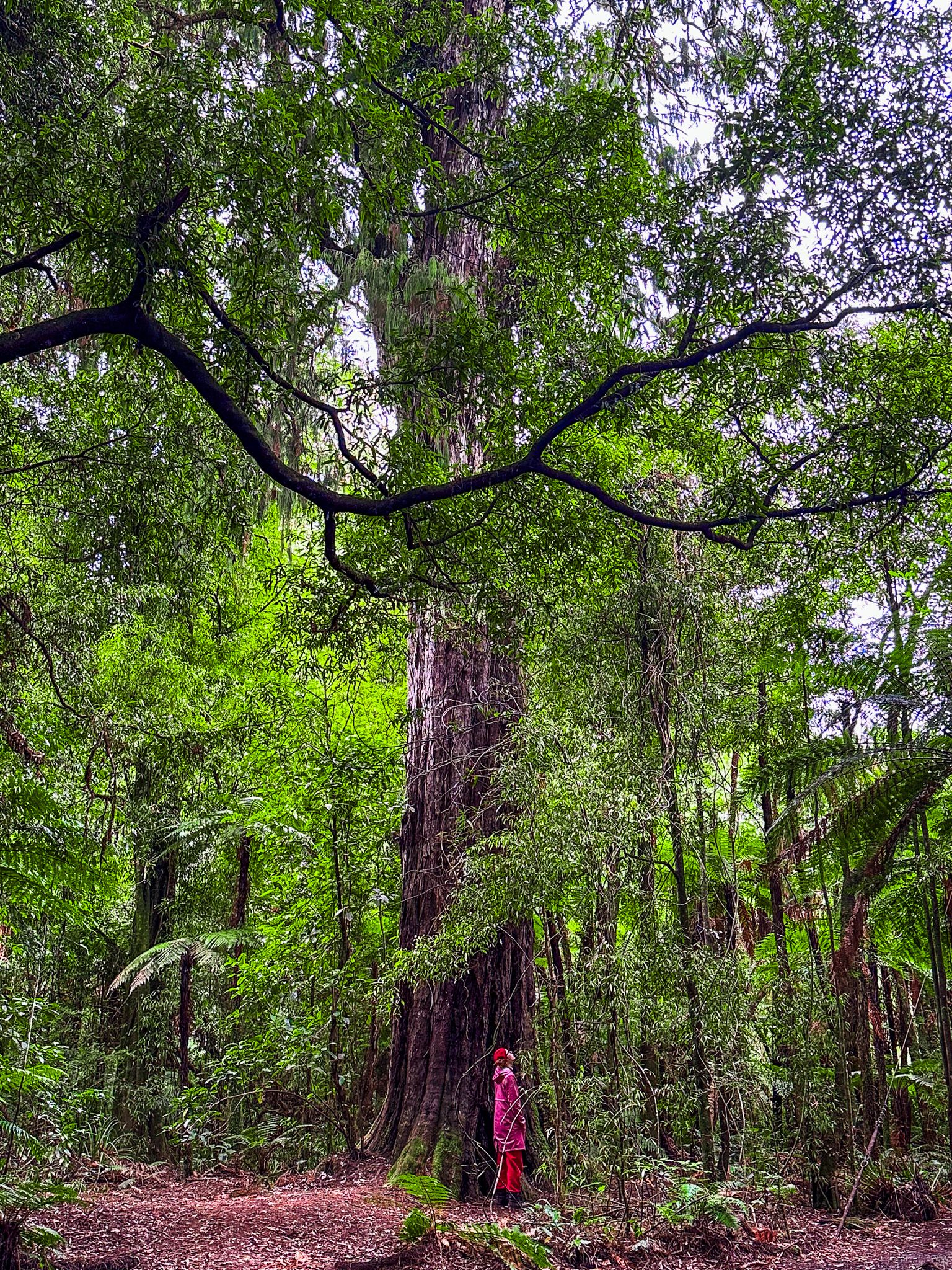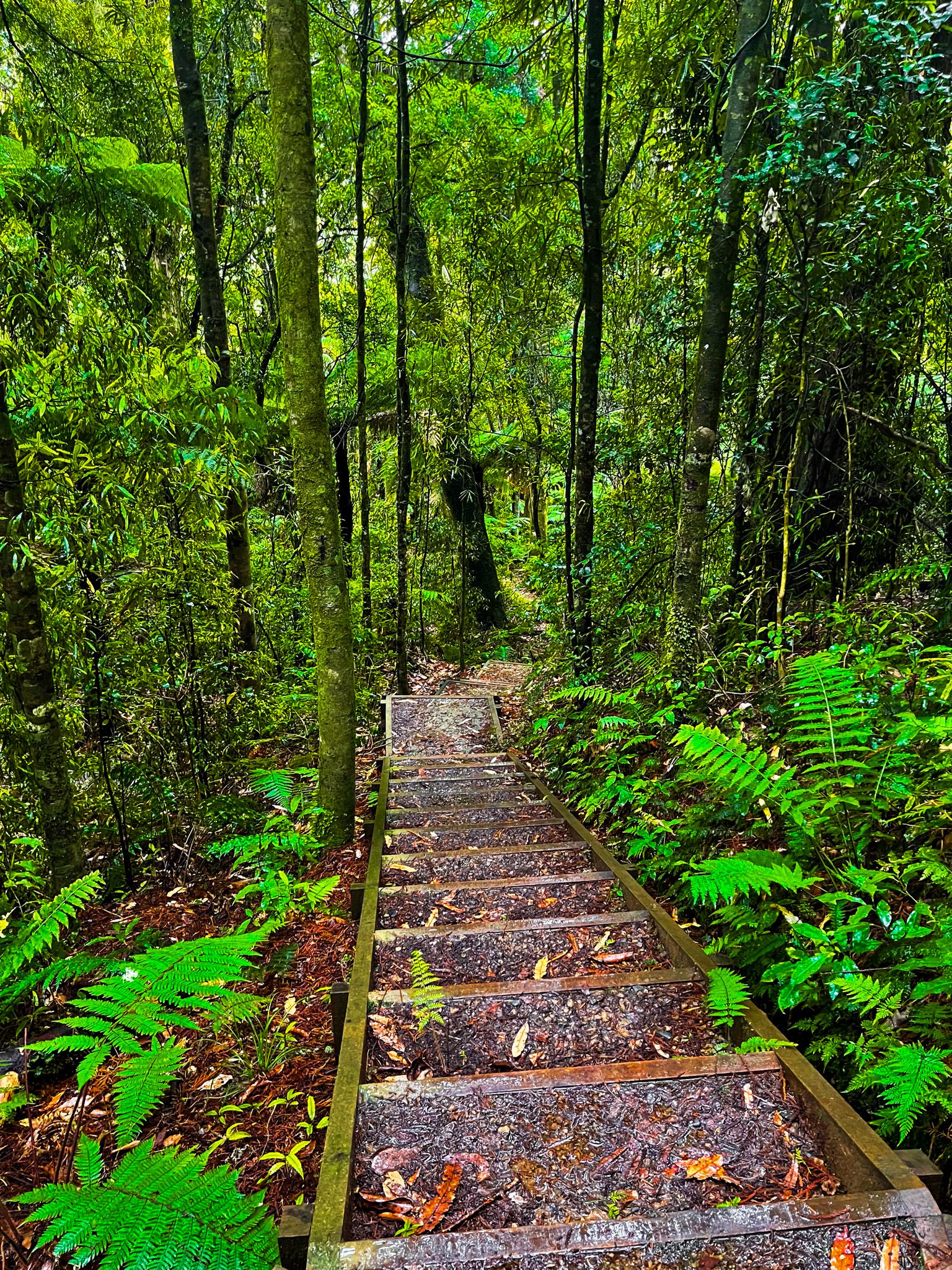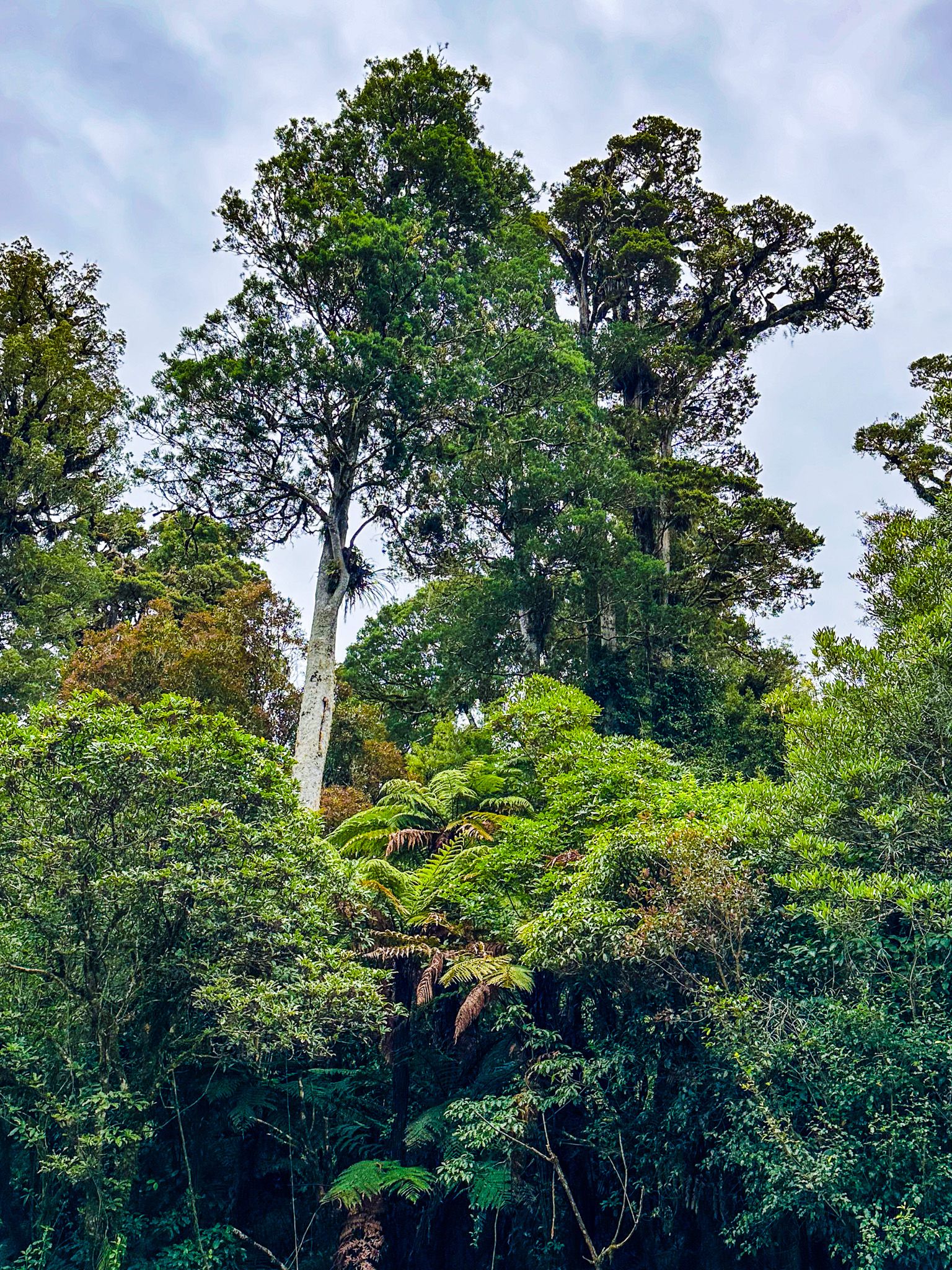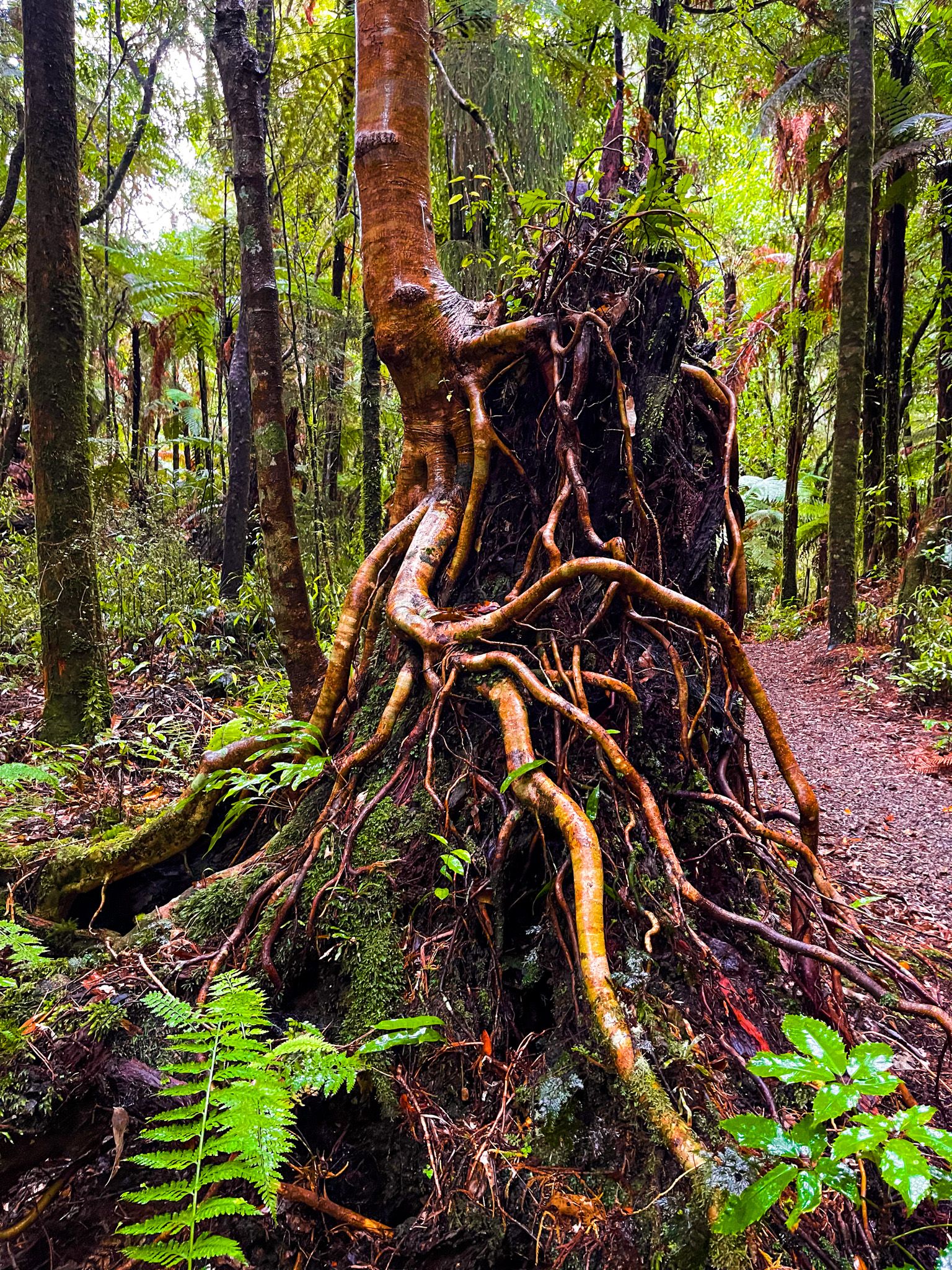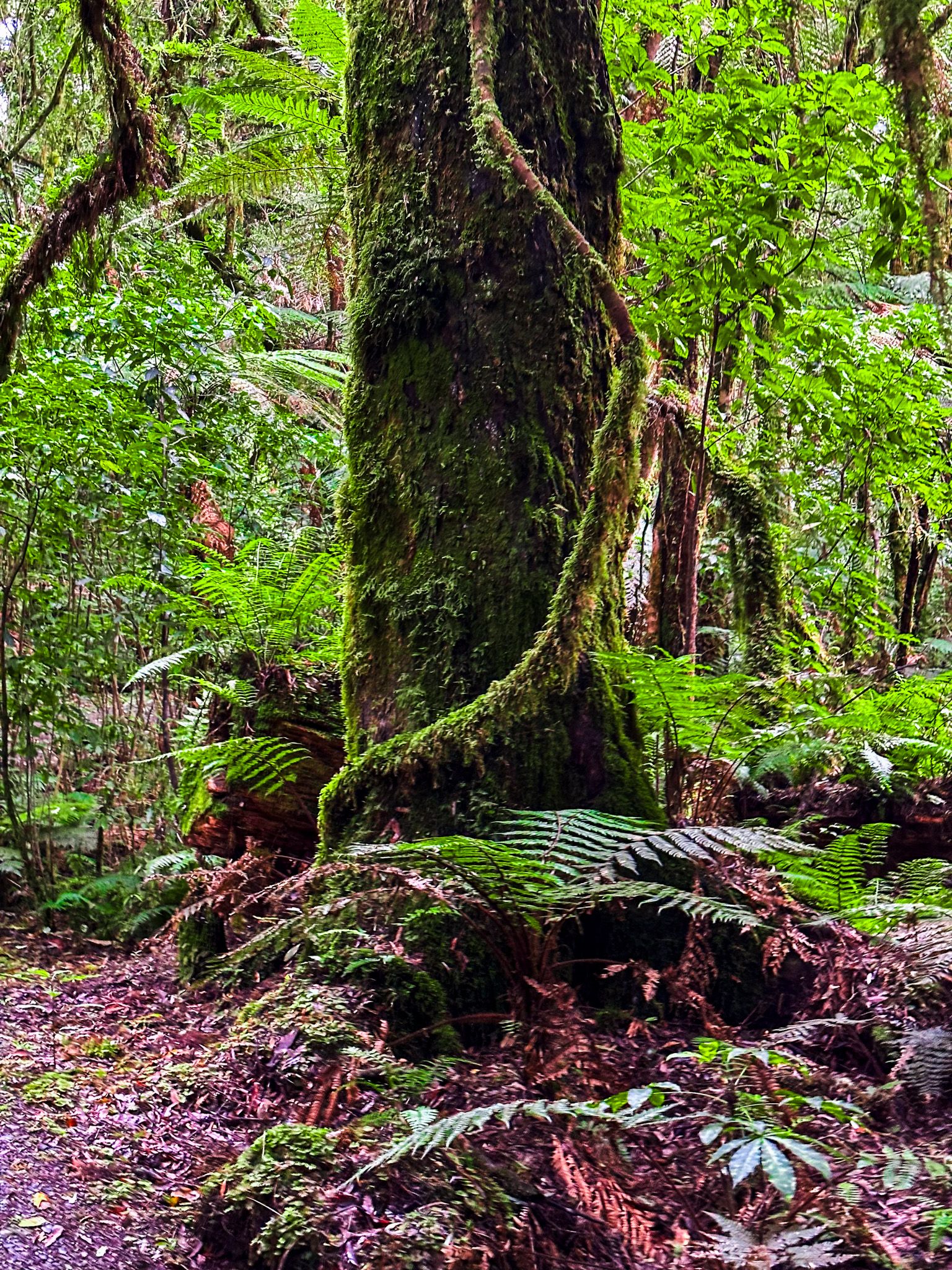Te toto o te tangata, he kai; te oranga o te tangata, he whenua (while food provides the blood in our veins, our health is drawn from the land).
The rising sun kisses the sleeping landscape of Aotearoa. Its light gently peels away the shadowy cloak of the previous evening, revealing a living land of wonder. Its heat dismisses the morning dew as a new day begins.
A Kārearea (New Zealand Falcon) glides above a freshly lit forest, finding a place to rest high in a canopy of giant native Tōtara, Rimu, Mātai, Miro, and Kahikatea trees. As it patiently awaits any movement in the lush foliage below, the dawn chorus greets the day. A symphony of birdsong expressing gratitude and delight for this wondrous paradise they call home.
Pureora Forest Park
It was our first visit to the Park and we found the main entrance not far from State Highway 30. The location really stood out, with Barryville and Pureora Field Base close by offering lodging if needed. Also, the ease of access to several of the Park's highlights, such as the Totara Walk, Link Road, Rimu Track, and Waihora Lagoon Track, was a pleasant surprise.
With short and accessible tracks, visitors can enjoy one or several, making a trip to Pureora Forest Park suitable for those seeking a short day out or an adventure across many days. The Park is full of tracks, each as stunning as the last.
Straddling the Hauhungaroa and Rangitoto Ranges between Lake Taupō and Te Kūiti, and rife with tramping options and forestry roads providing access from all sides, the Pureora Forest Park offers a glimpse into Nature's ability to recover when left to its own devices. We couldn't resist paying it a visit after learning the Park's history.
Scars of the Past
A pillaged landscape lay still, its emptiness echoing tragedy. Sounds of heavy footsteps, thudding tools and, finally, the cracking and falling of another ancient giant travel on the breeze as it rustles the tops of trees brought here from a faraway land. An unwanted facelift altering life for everything that calls this ecosystem home.
The destructive nature of an unsustainable industry spreads, straining and endangering the remaining flora. In the name of industrial longevity, intruders take the places of the former majesties of this enchanted land. Such is the story of when European settlers met Te Ika-a-Māui (North Island).
Within three short generations, the North Island was changed forever at the hands of axe-wielding Europeans driven by a desire for a profit they were accustomed to in their homelands. By the 1930s, the dense, ancient forest covering Te Ika-a-Māu from tip to tip was becoming unrecognisable.
Pureora Forest, still relatively young compared to some forests across New Zealand due to Taupō's last eruption 1,800 years ago, was no exception. Over time, the young native forest was harvested and replaced by farms and pines. Plantations of fast-growing exotic pine were becoming commonplace as our extensive native forests were being driven to scarcity.
However, an unwavering spirit prevailed, and in the late 1970s, people had enough.
Taking a Stand
To protect what was left of the Park, a passionate tribe joined forces, strengthening the local conservation movement. Protests began slowing the cutting, culminating in a tree sit-in in 1978 at a location now commemorated on the present-day Forest Tower Track. A moratorium on harvesting led to its complete abolishment in 1982. The surviving native forest, along with some of the pine-riddled areas, were collectively named the Pureora Forest Park.
Five years later, in 1987, the Department of Conservation (DOC) took responsibility for the Park, protecting it from further extraction. These conservation efforts meant big changes for the towns of Pureora (now Pureora Field Base) and Barryville as local forestry was brought to an end.
Bouncing Back
Despite its intense challenges, the 78,000-hectare podocarp rainforest, Pureora Forest Park, stands as a testament to Nature's resilience and the power of community.
During that extractive time, the Park was a labyrinth of tram tracks, littered with on-site timber mills and equipment, most of which disappeared with the trees.
However, thanks to DOC implementing the protection of what little traditional forestry heritage remains in Pureora, you can still see the remnants of the milling village set up in 1945, several examples of vintage equipment on Pikiariki (Hill) Road, the Historic Crawler Tractor and the well-maintained Ongarue Tramway at the south end of the Timber Trail.
Astonishingly, these preserved relics are the only evidence of the devastation Pureora faced. Reminders, sprinkled in a landscape seemingly untouched to those unaware of the past, of how capable Nature is when left to thrive.
Not to be Missed
We felt like we'd stumbled upon a treasure chest of options too abundant to cover in one visit. In fact, despite multiple trips into the Park, we feel like we've only scratched the surface. There's just so much more to discover. We're already planning our next adventure to this shrine of conservation and recovery, and you should, too!
Yes, Aotearoa is quite the place! What we lack in size, we more than make up for in diversity. But, with so many hidden treasures across the country, choosing the next adventure can sometimes be challenging. Well, that's what we're here for!
Each of our stories will highlight yet another fascinating area, tempting the reader to explore new and exciting corners of our stunning backyard. Today, it was Pureora Forest Park. Next time, it'll be somewhere else. But where?



